HIV and African American People: HIV Diagnoses
Data for 2020 should be interpreted with caution due to the impact of the COVID-19 pandemic on access to HIV testing, care-related services, and case surveillance activities in state and local jurisdictions. While 2020 data on HIV diagnoses and prevention and care outcomes are available, we are not updating this web content with data from these reports.
HIV diagnoses is one of the six Ending the HIV Epidemic in the U.S. indicators. HIV diagnoses refers to the number of people who received an HIV diagnosis during a given year. In 2019, Black/African American people made up 13% of the US population, but 42% (15,305)b of the 36,801 new HIV diagnoses in the United States and dependent areas.c



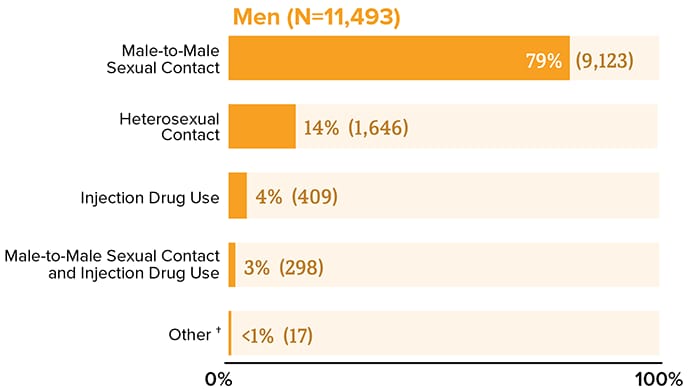
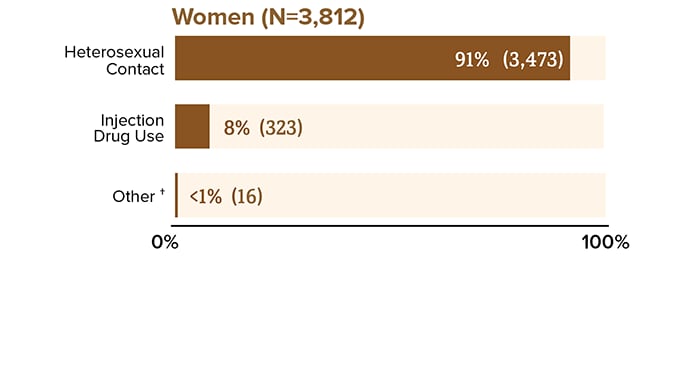
* Based on sex assigned at birth and includes transgender people. For more information about transgender people, visit CDC’s HIV and Transgender People web content.
† Includes perinatal exposure, blood transfusion, hemophilia, and risk factors not reported or not identified.
Source: CDC. Diagnoses of HIV infection in the United States and dependent areas, 2019. HIV Surveillance Report 2021;32.
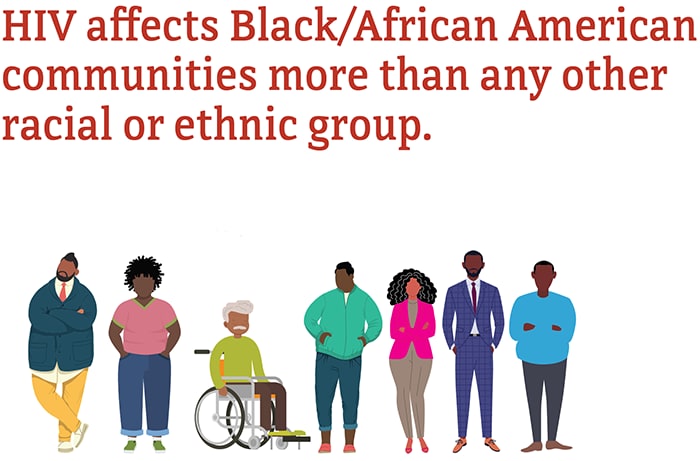
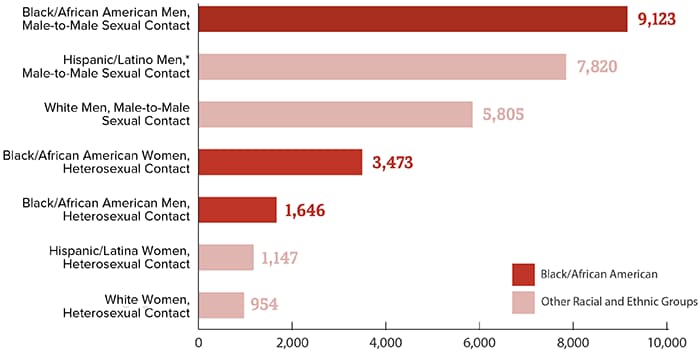
NOTE: Subpopulations representing 2% or less of all people who received an HIV diagnosis in 2019 are not represented in this chart.
* Hispanic/Latino people can be of any race.
Source: CDC. Diagnoses of HIV infection in the United States and dependent areas, 2019. HIV Surveillance Report 2021;32.
From 2015 to 2019, HIV diagnoses decreased 8% among Black/African American people overall. Good progress has been made with reducing HIV diagnoses among most age groups.
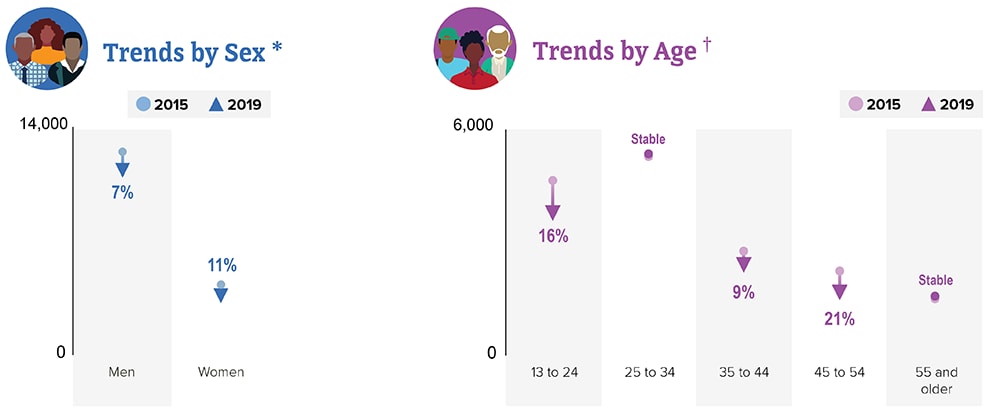
* Based on sex assigned at birth and includes transgender people.
† Does not include perinatal and other transmission categories.
Source: CDC. Diagnoses of HIV infection in the United States and dependent areas, 2019. HIV Surveillance Report 2021;32.
aBlack refers to people having origins in any of the Black racial groups of Africa. African American is a term often used for people of African descent with ancestry in North America. This web content uses African American, unless referencing surveillance data.
bUnless otherwise noted, data in this web content are for adults and adolescents aged 13 years and older.
cAmerican Samoa, Guam, the Northern Mariana Islands, Puerto Rico, the Republic of Palau, and the US Virgin Islands.
- CDC Diagnoses of HIV infection in the United States and dependent areas, 2019. HIV Surveillance Report 2021;32.
- CDC. Estimated HIV incidence and prevalence in the United States, 2015–2019. [PDF – 3 MB] HIV Surveillance Supplemental Report 2021;26(1).
- CDC. Monitoring selected national HIV prevention and care objectives by using HIV surveillance data—United States and 6 dependent areas, 2019. HIV Surveillance Supplemental Report 2021;26(2).
- Randolph SD, Golin C, Welgus H, Lightfoot AF, Harding CJ, Riggins LF. How perceived structural racism and discrimination and medical mistrust in the health system influences participation in HIV health services for Black women living in the United States South: a qualitative, descriptive study. J Assoc Nurses AIDS Care2020;31(5):598-605. PubMed abstract.
- Beer L, McCree DH, Jeffries WL 4th, Lemons A, Sionean C. Recent US Centers for Disease Control and Prevention activities to reduce HIV stigma. J Int Assoc Provid AIDS Care2019;18:1-5.
- CDC. Sexually transmitted disease surveillance, 2019. Accessed January 18, 2022.